Submitted by medium on Mon, 03/26/2018 - 12:25
By Stewart Brand. Introduction by John Markoff, 2017–18 CASBS fellow and former technology journalist for the New York Times. Among Markoff’s fellowship year projects is a biography of Brand.
In the spring of 1960 in his final semester at Stanford University, Stewart Brand, a 21-year old biology major, took a magazine writing class. It was a busy term for Brand. In addition to the writing class, he was studying ecology, drawing in the art department, getting ROTC credit for a course on military administration, a senior colloquium on mysticism in political science, and a class on Greek and Roman Mythology in the classics department.
Brand was preparing to join the army after he graduated, but also thinking about a career as a journalist or a photojournalist, and the magazine course put him in contact with the publishing world.
“The visits with Sunset editors, S.F. Bureau chief for Newsweek, etc. are of much value,” he wrote his parents.
Indeed he was able to convince the editors of the New York Times Sunday Magazine to assign (him to write) an article on a little known Stanford organization called the Center for Advanced Study in the Behavioral Sciences, then an independent research organization that was adjacent to the University. With pride in his letter to his parents, he added: “This will involve interviews with (Wilbur) Schramm, Eugene Burdick, Franz Alexander, and others of that Who’s Who sort….This is an absolutely unique place, or rather idea, which sits atop a lovely hill behind the campus. A place where top scholars, old and young, from a vast range of fields, have a year off to do whatever they damn please — at full salary.”
Brand spent the semester making regular visits to the Center in the hills behind campus, while simultaneously several miles to the West at what is now the Jasper Ridge Biological Preserve, he studied the interaction of two species of tarantula living in the same ecological niche under the guidance of Paul Erlich, an assistant biology professor who had just arrived at Stanford.
In addition to visiting CASBS he conducted telephone interviews with scientists who had previously been CASBS fellows, such as primatologist Sherwood Washburn and cyberneticist Gregory Bateson.
In the end, however, the Times editors declined to run his article. “We agree with Mr. Cutler that the story is well told,” an editor wrote him. “However, it is not close enough to the news and too special in its interest for consideration by the New York Times.”
Casting a wide net drew no better results. Both Harper’s and The Atlantic declined to offer assignments and Horizon also sent him a rejection notice — a blow that was softened by a visit to Horizon’s New York offices where an editor shared gossip on romantic figures like Ernest Hemingway.
As a consequence the piece has languished — since 2000 along with Brand’s journals and correspondence, now held in Stanford’s Special Collections & University Archives at Green Library.
Published for the first time below in its original form, it offers insights into the roots of Brand’s intellectual journey. His discovery of Washburn attracted him to the idea that would be first described as “coevolution” by Erlich four years later. A little more than a decade later Brand would also become close to Bateson and a conversation titled “Both Sides of the Necessary Paradox,” appearing first in Harpers before being reprinted in II Cybernetic Frontiers paired with an article Brand had written about computer hacker culture that had first appeared in Rolling Stone Magazine.
Significantly that piece focused on two other think tanks hidden in the hills behind Stanford University that would also have a significant impact on the world: the Stanford Artificial Intelligence Laboratory and the Xerox Palo Alto Research Center.
John Markoff
March 25, 2018
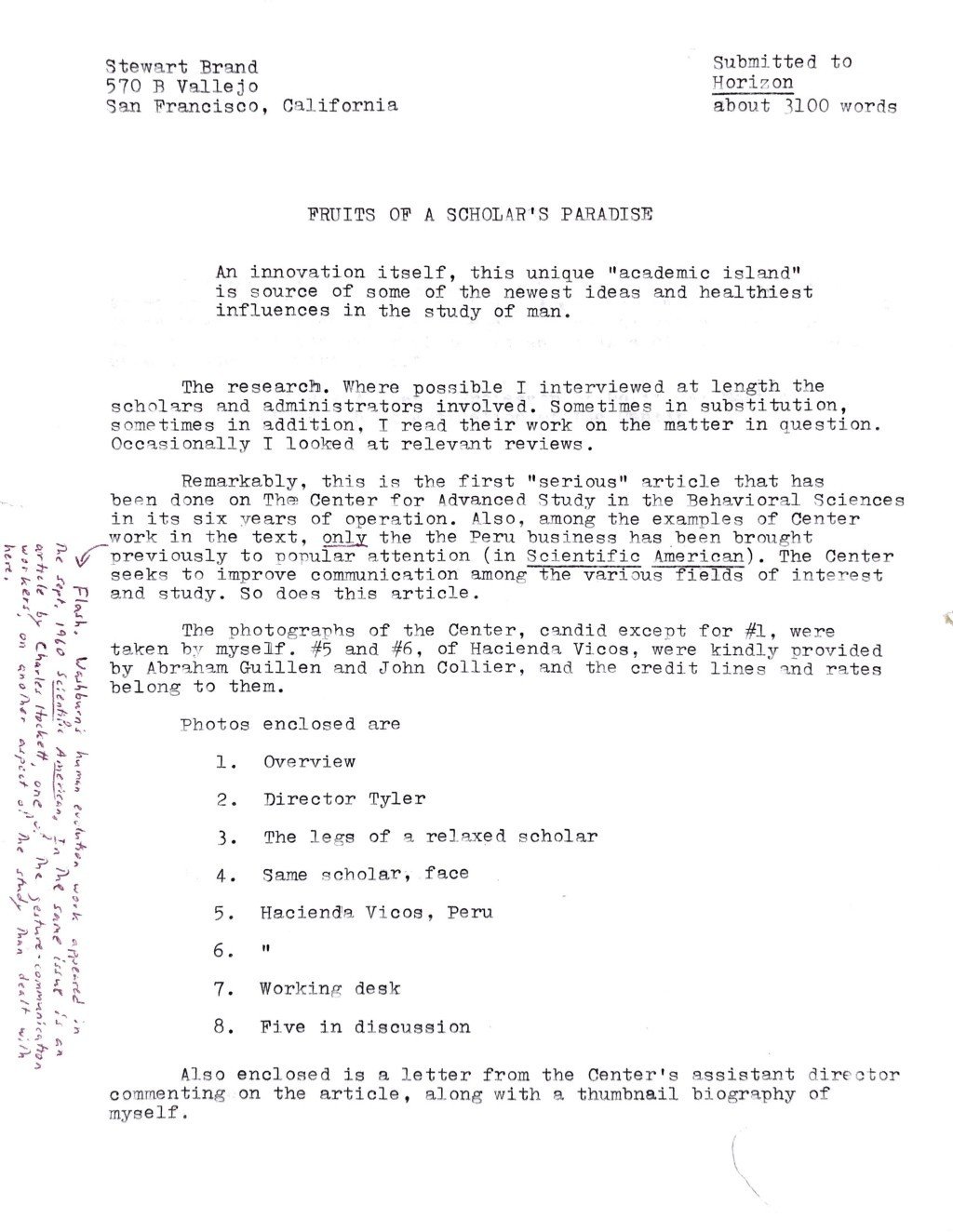
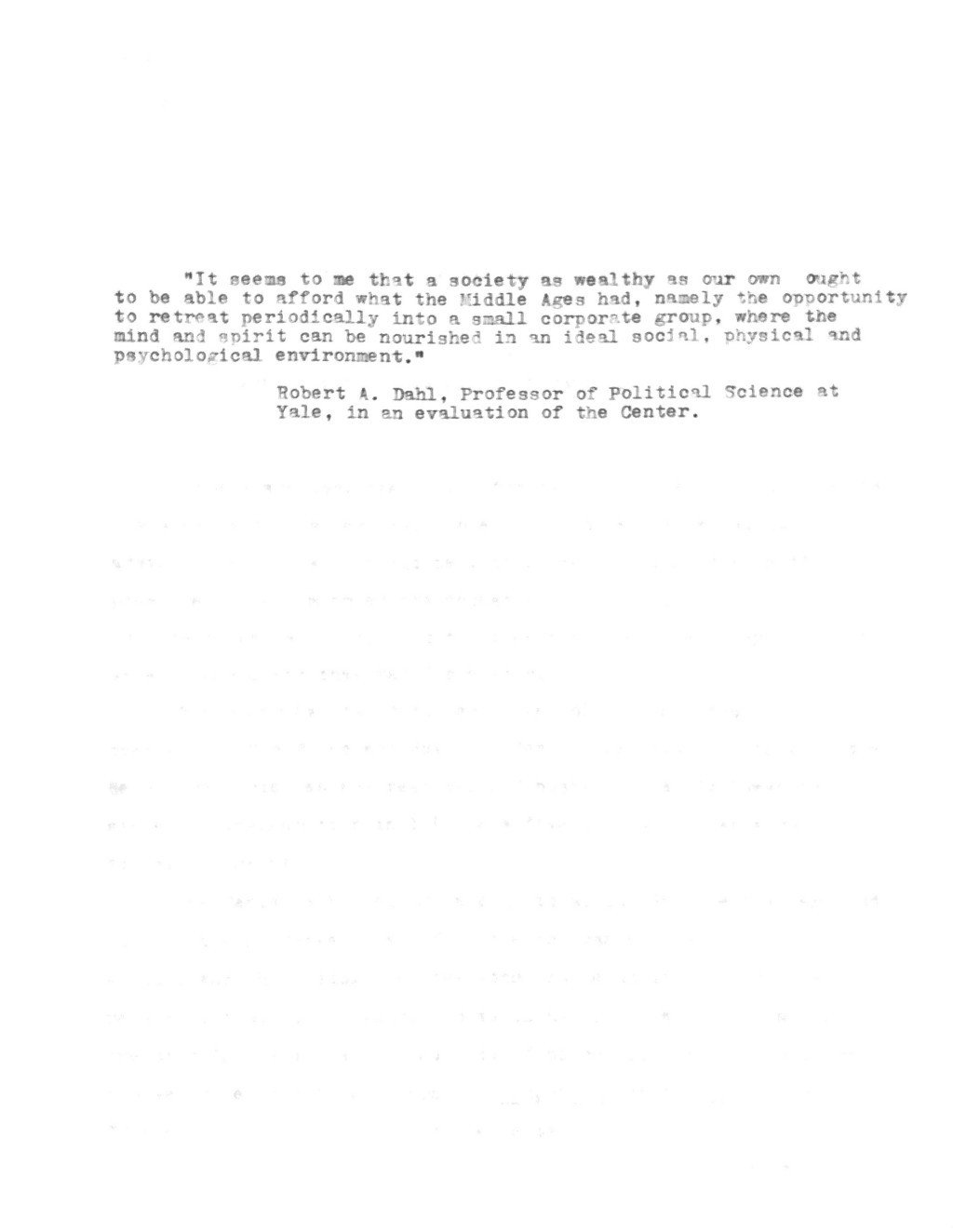

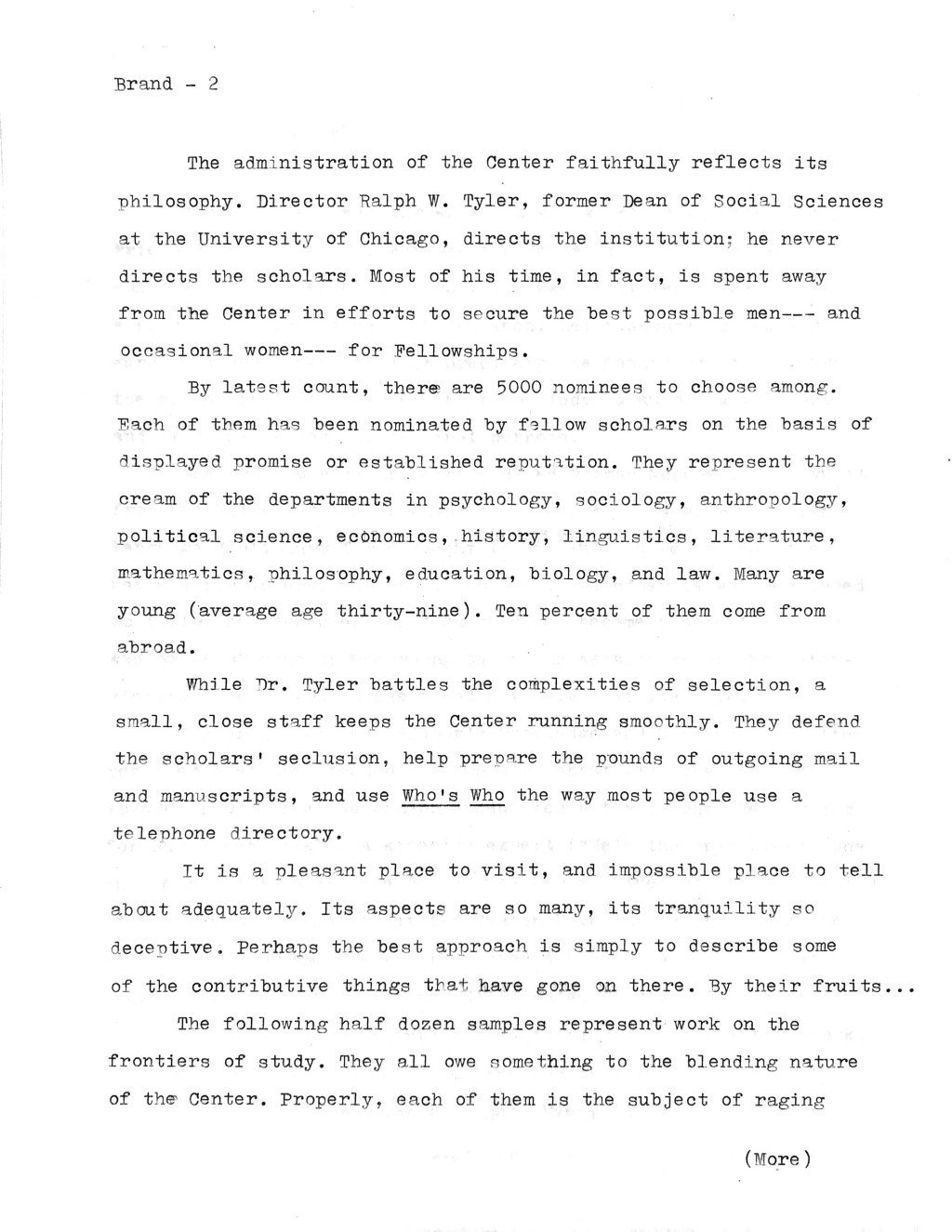
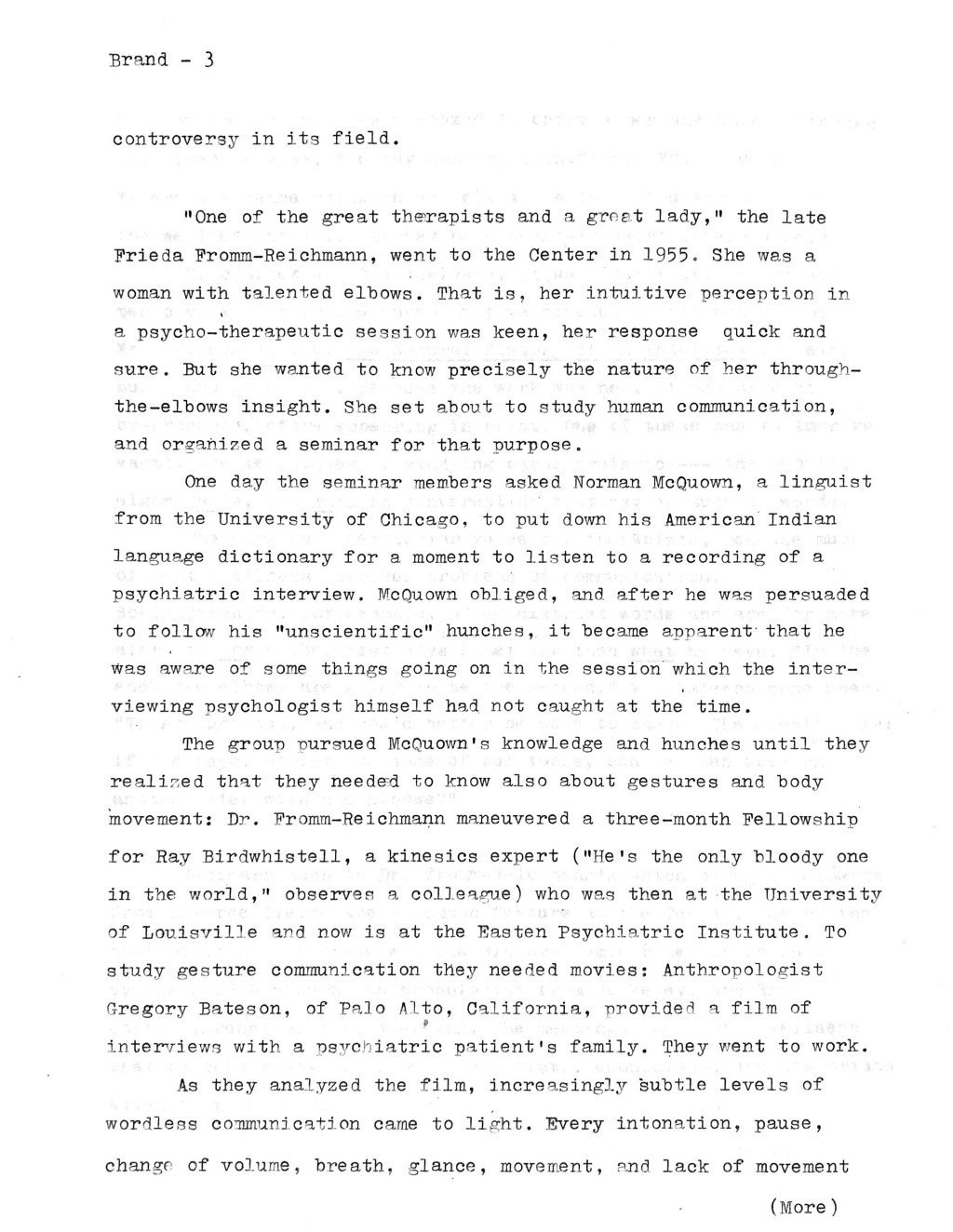
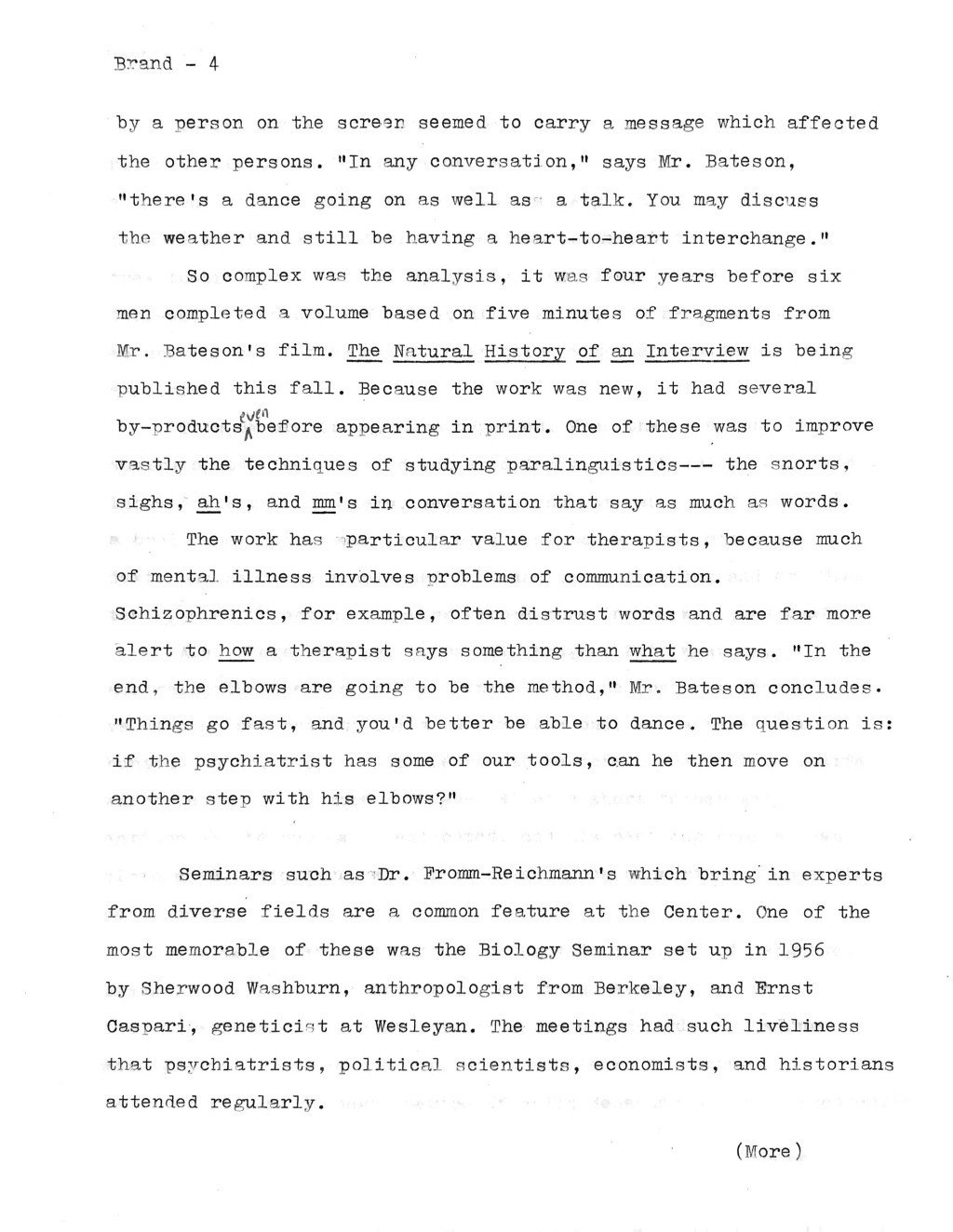
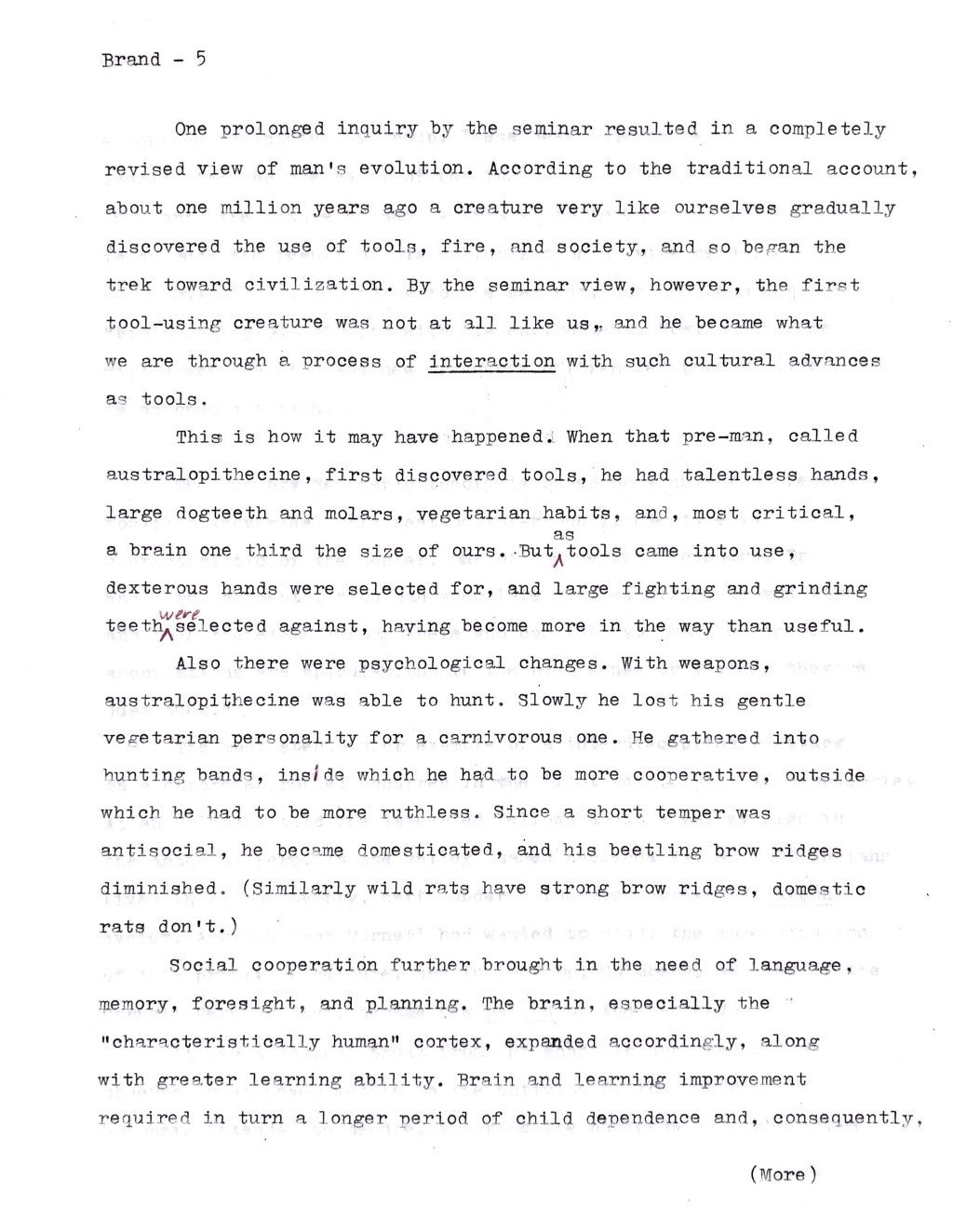

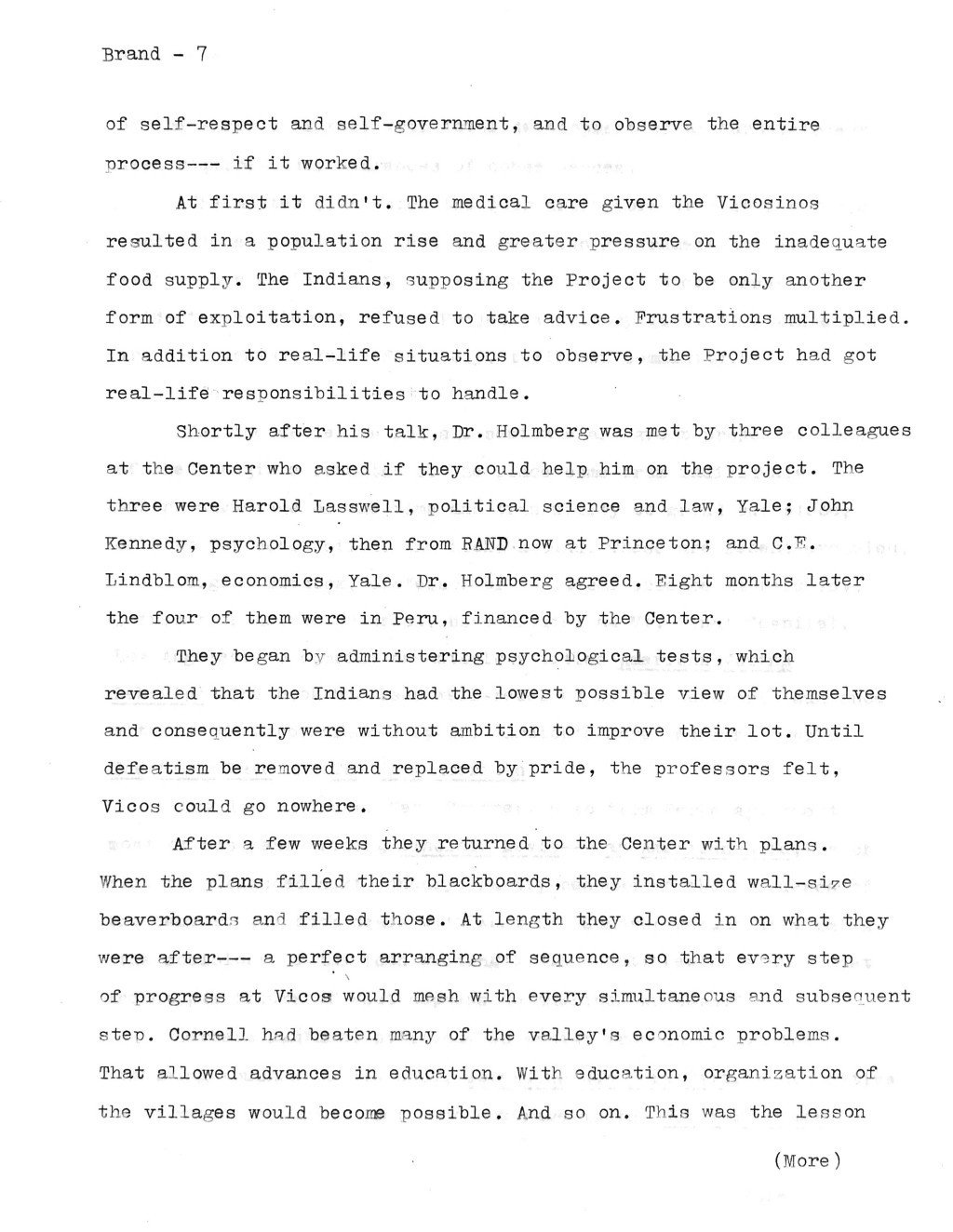
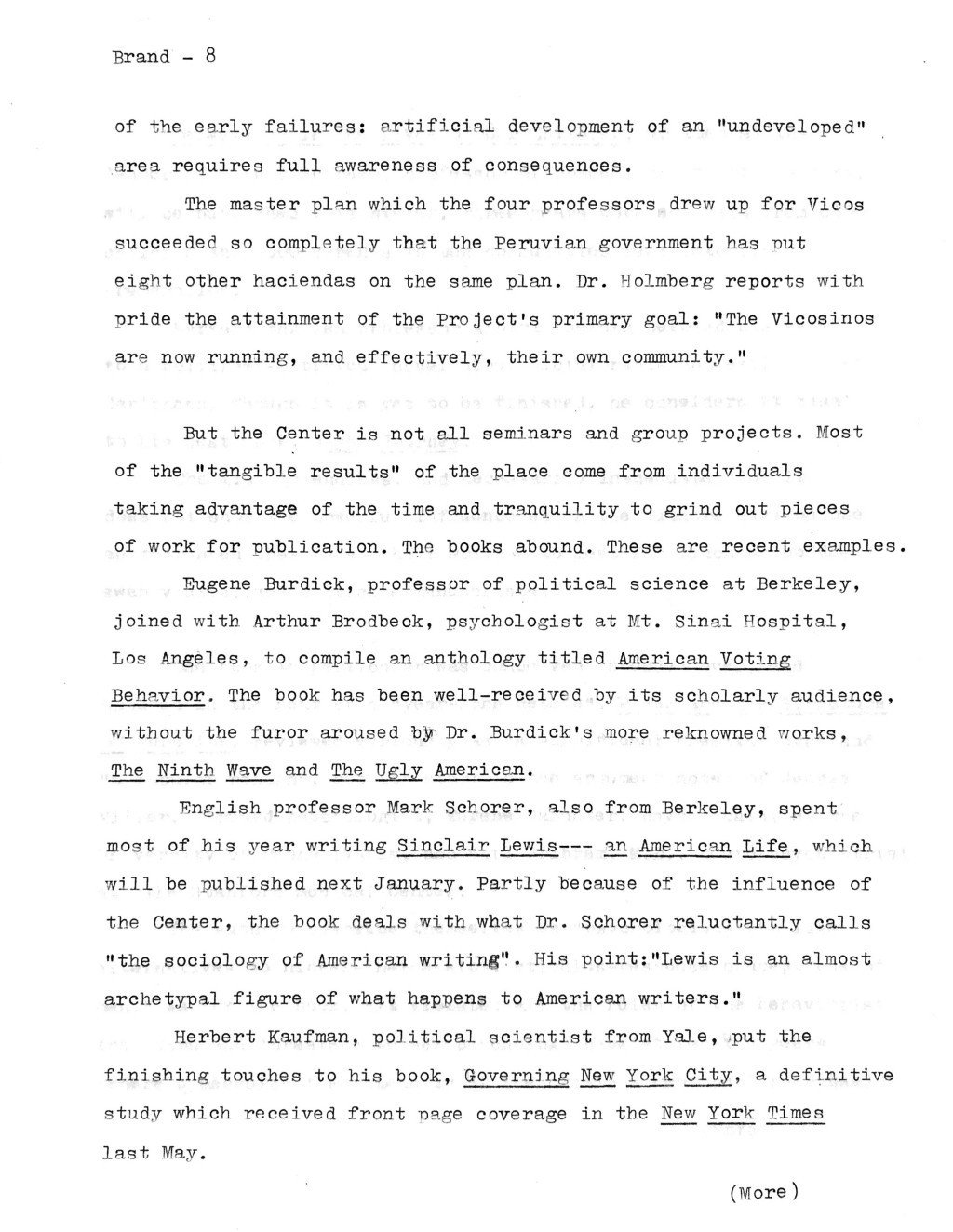
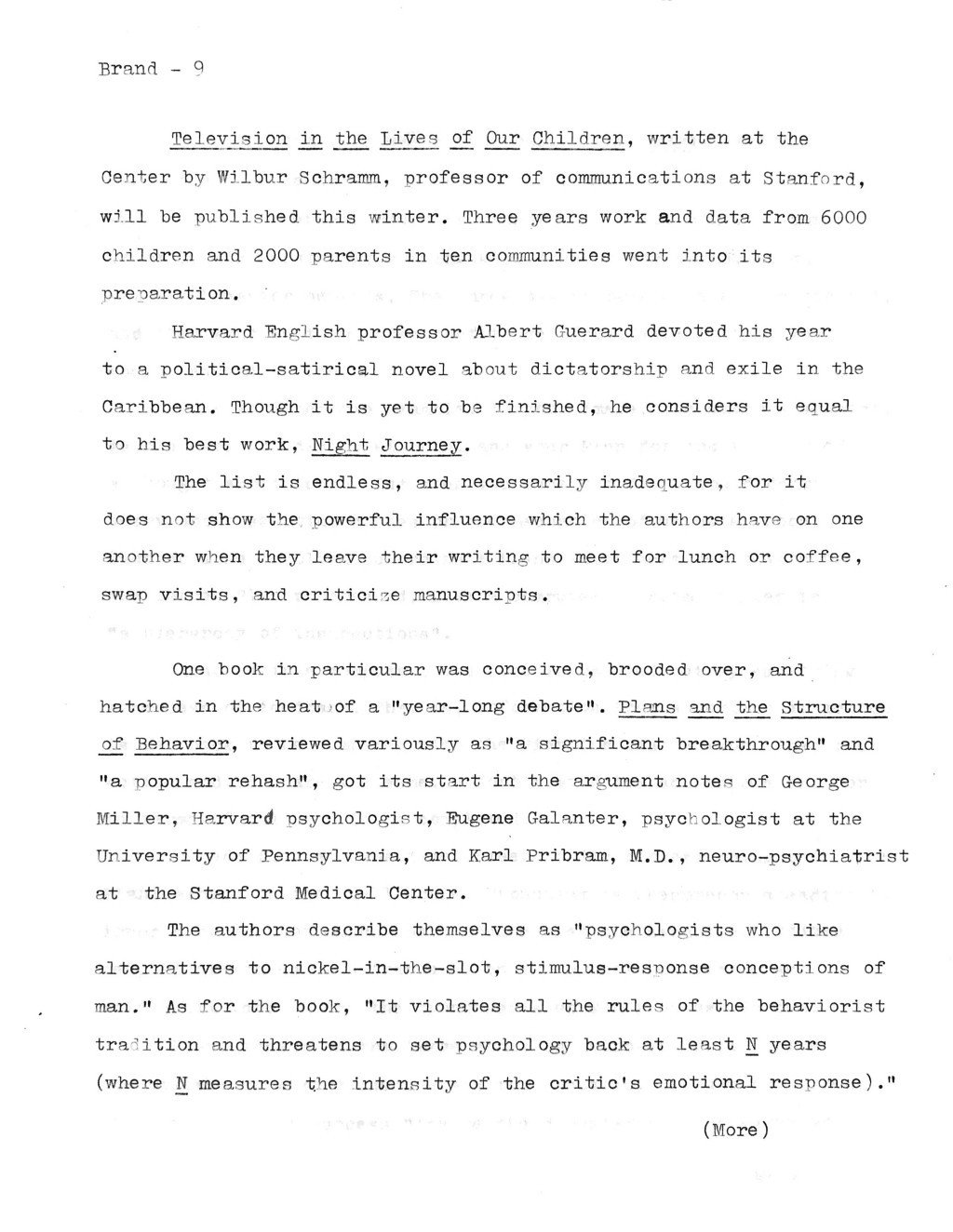
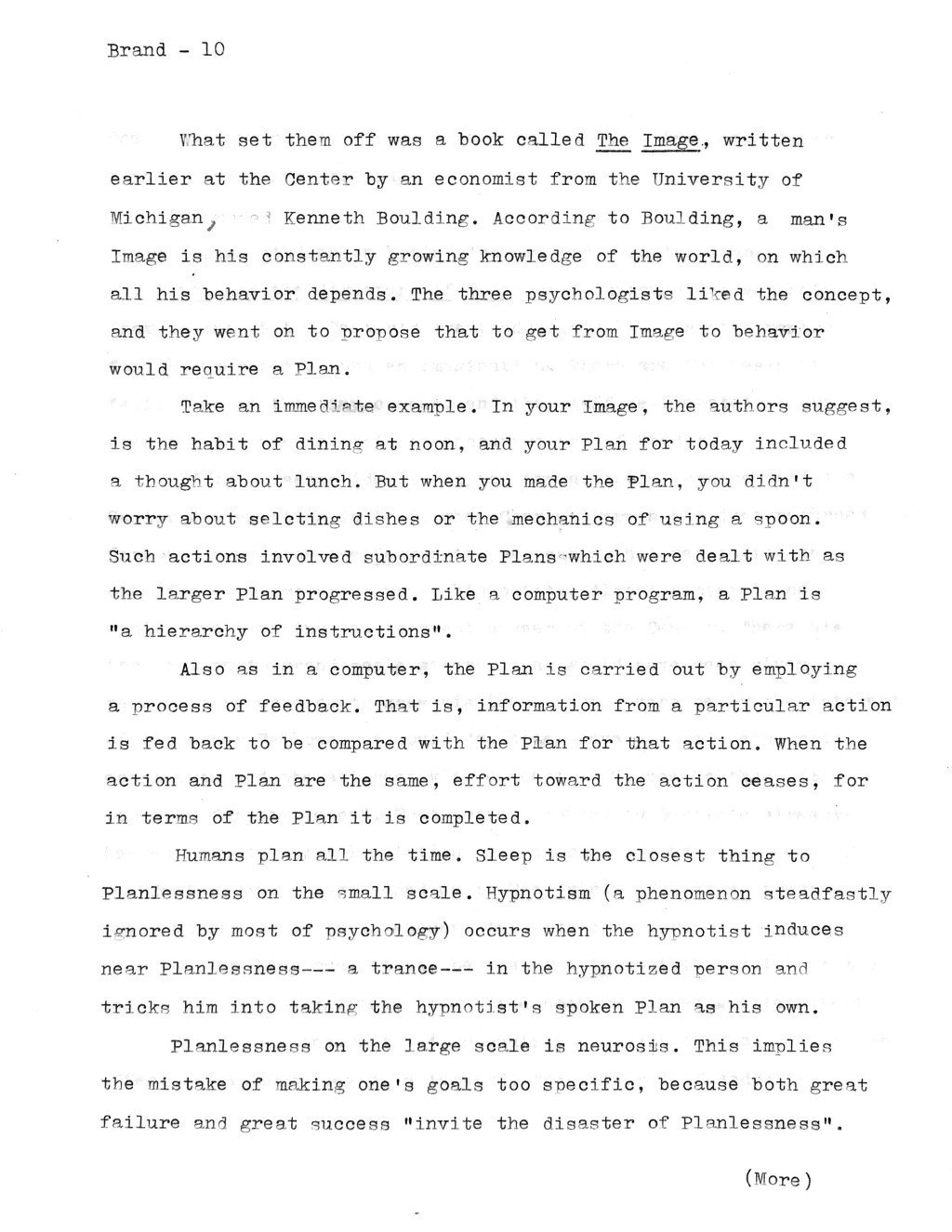

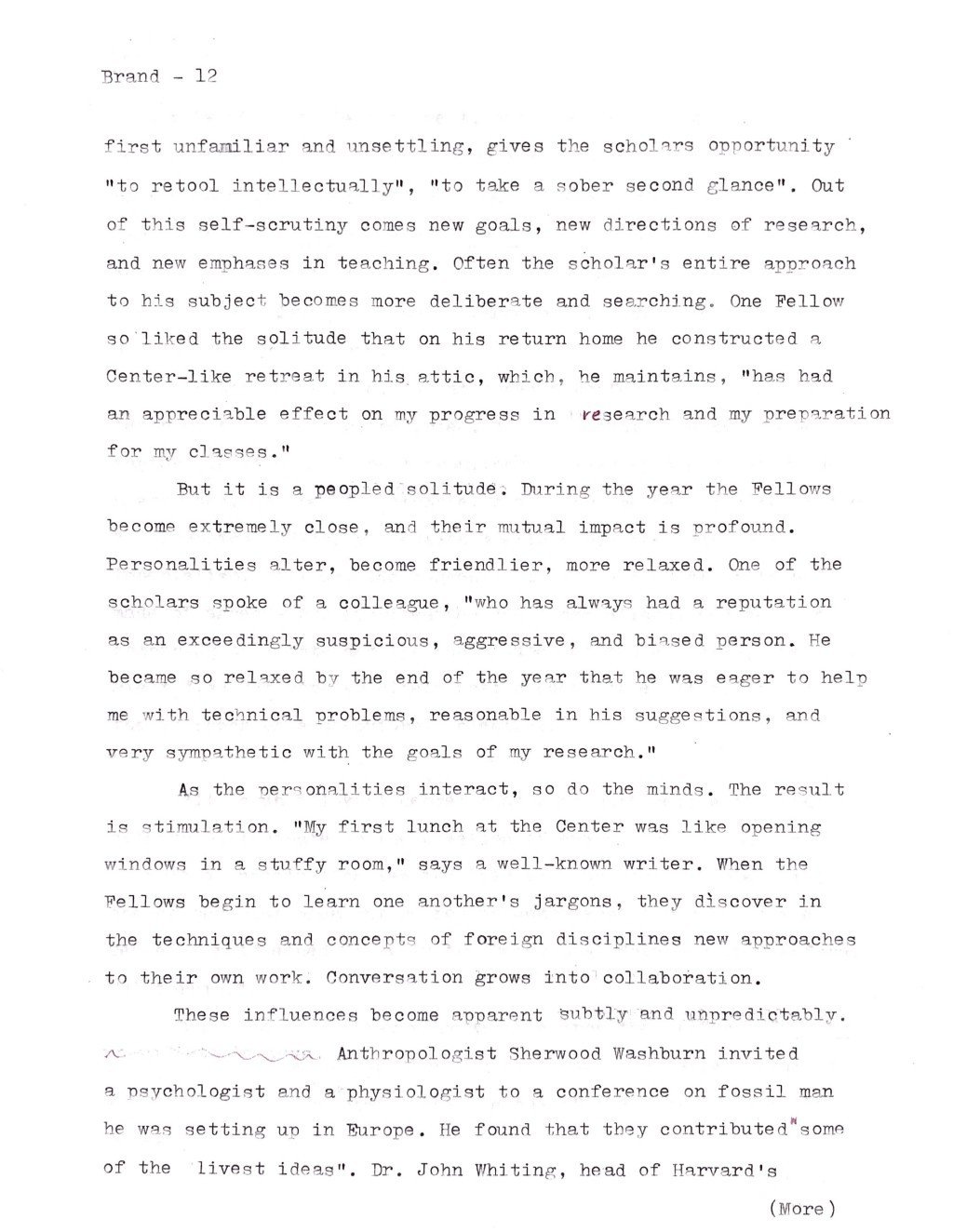

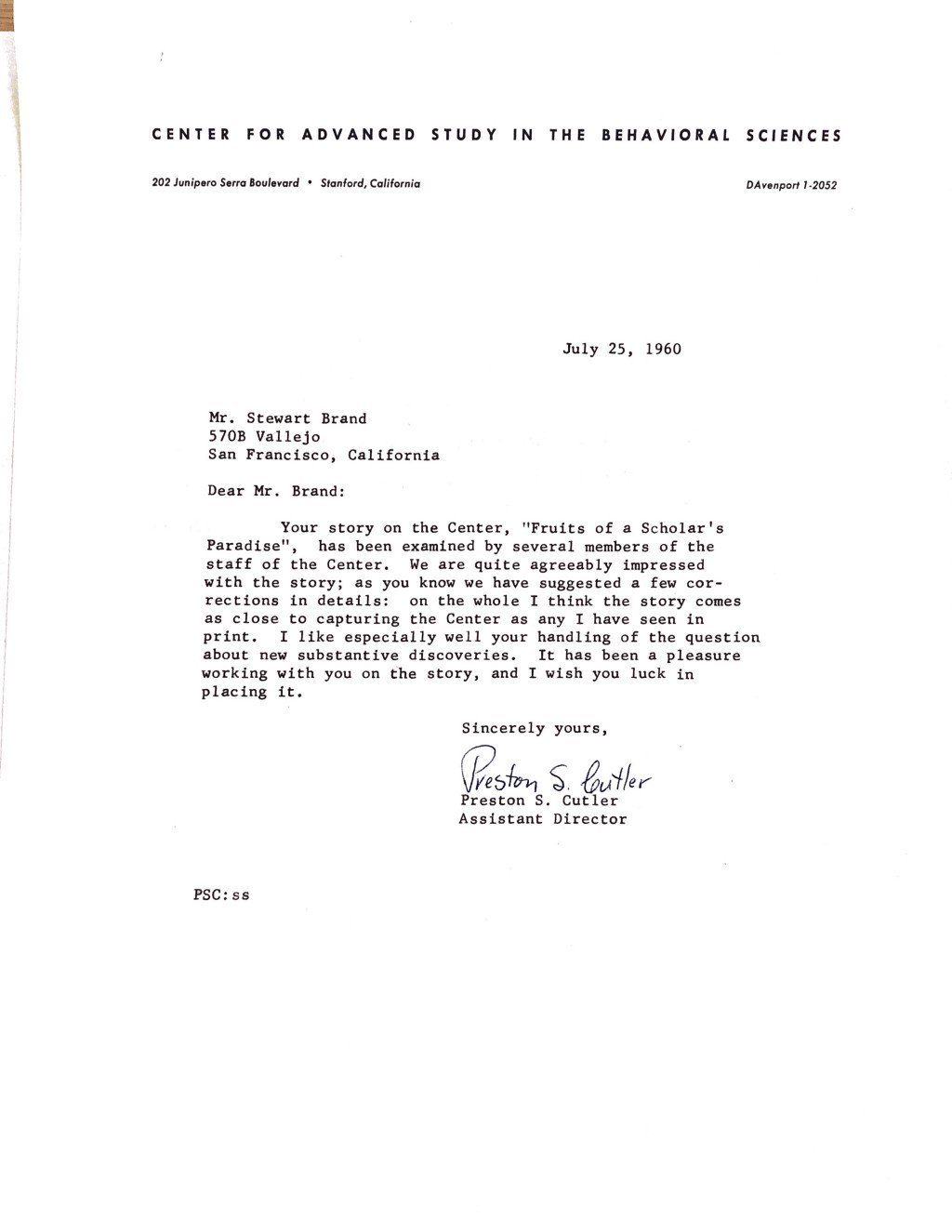
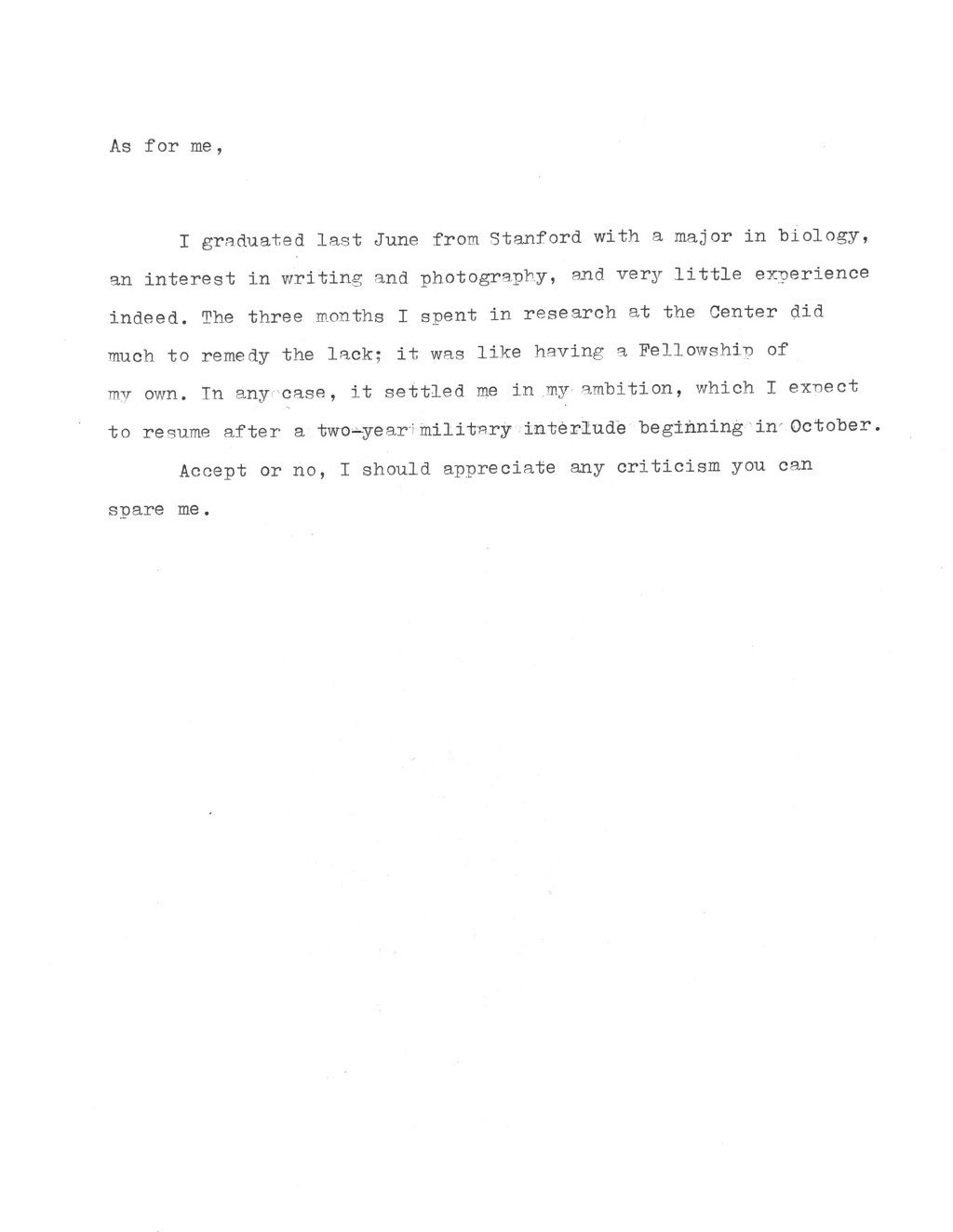

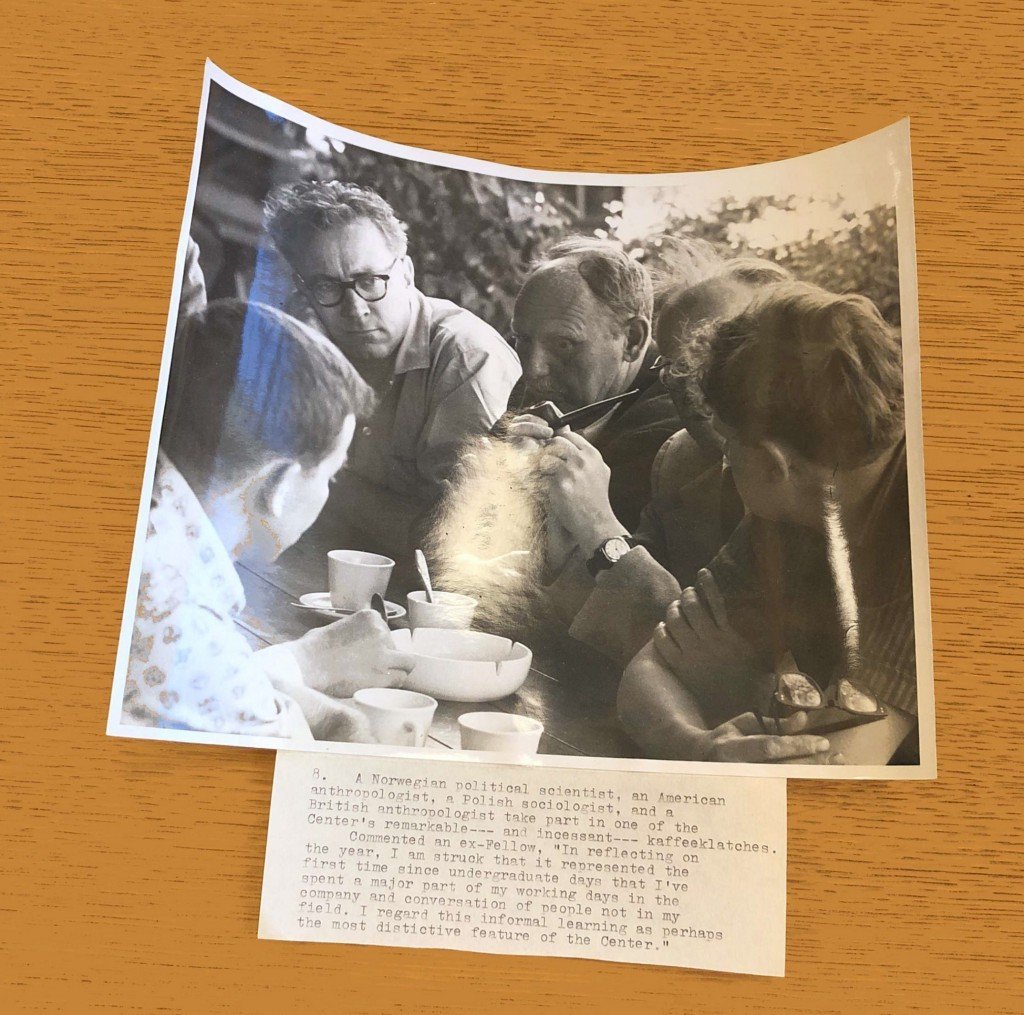
Source: Department of Special Collections, Stanford University Libraries, reprinted with the permission of Stewart Brand.
Read More Link:
